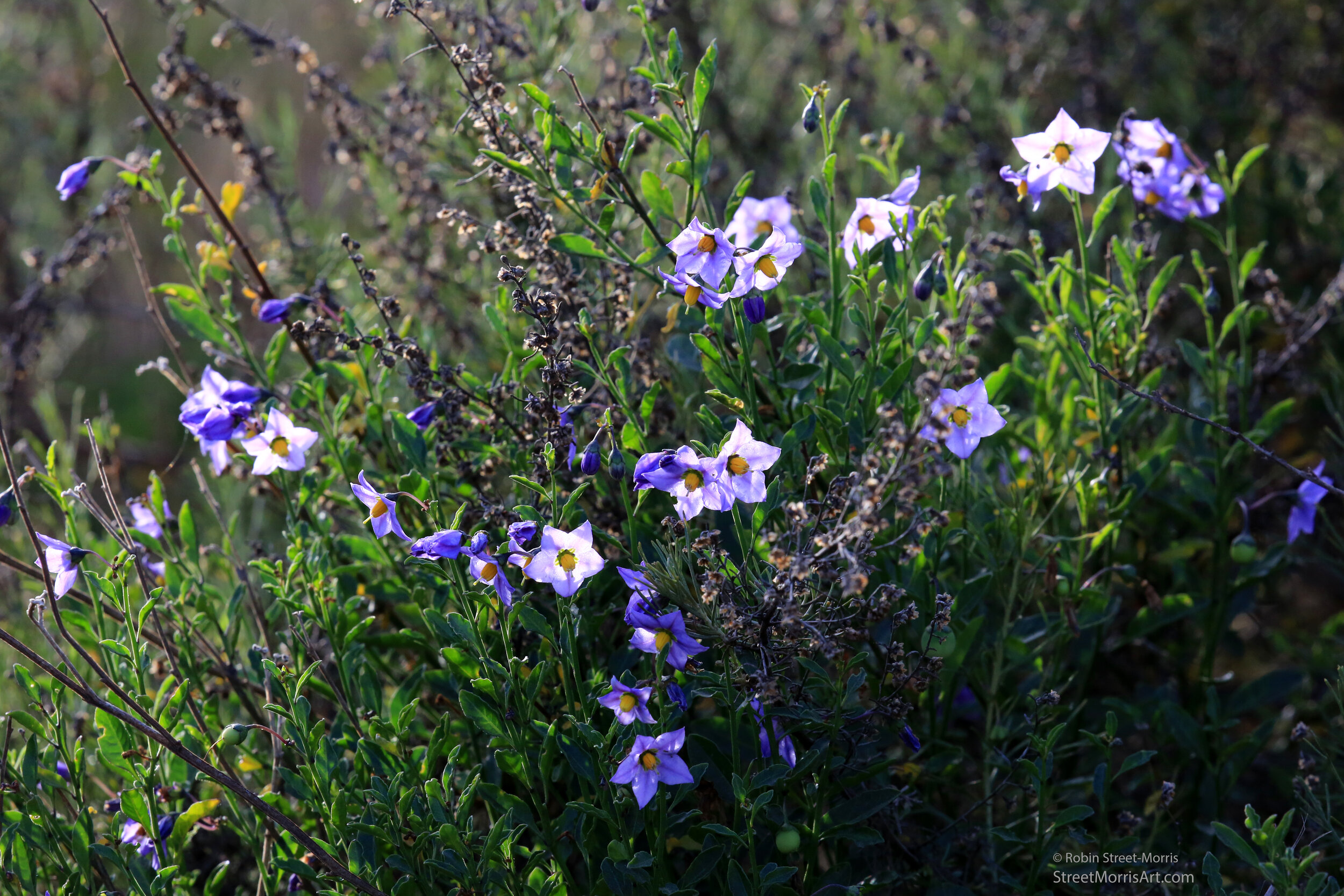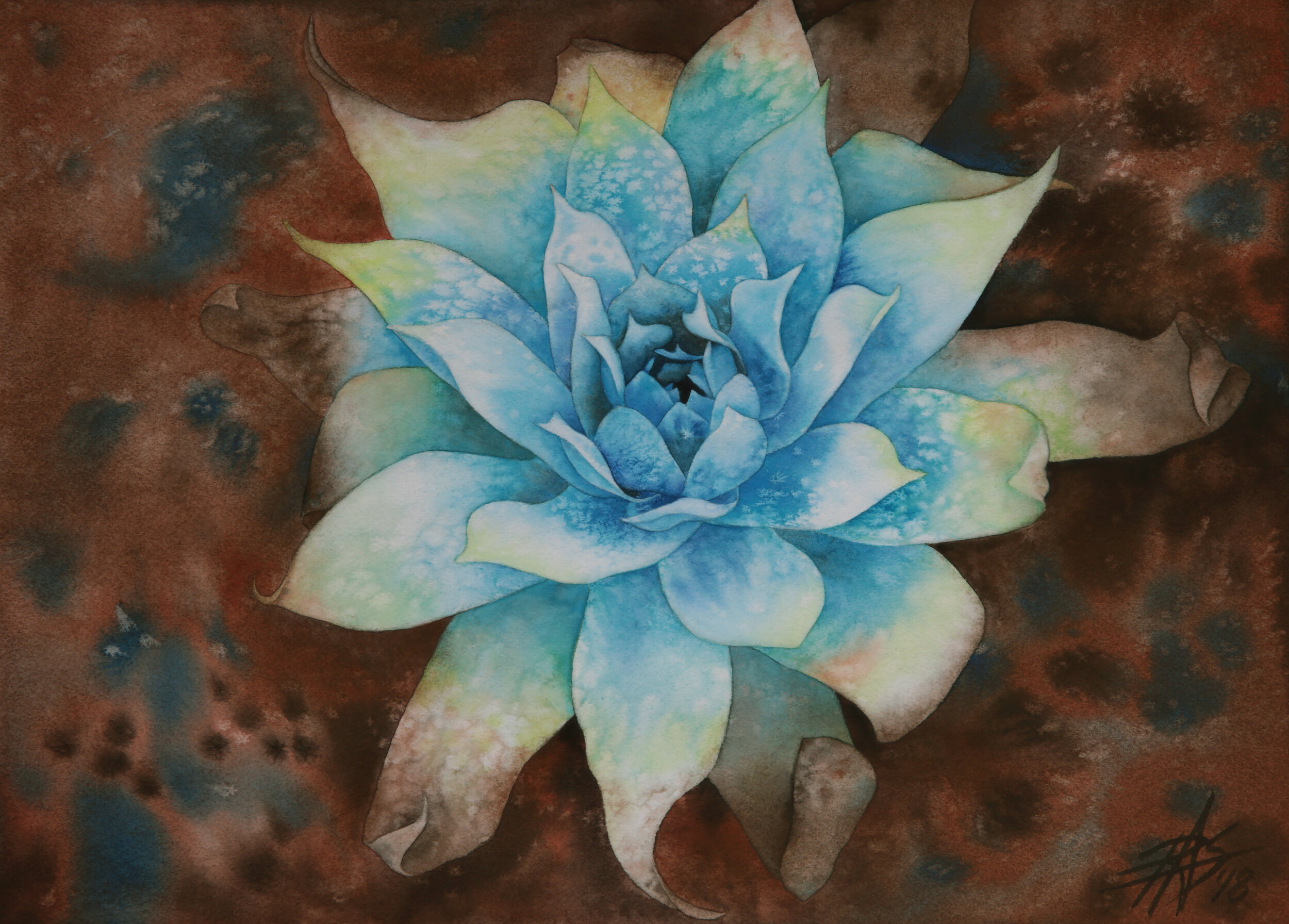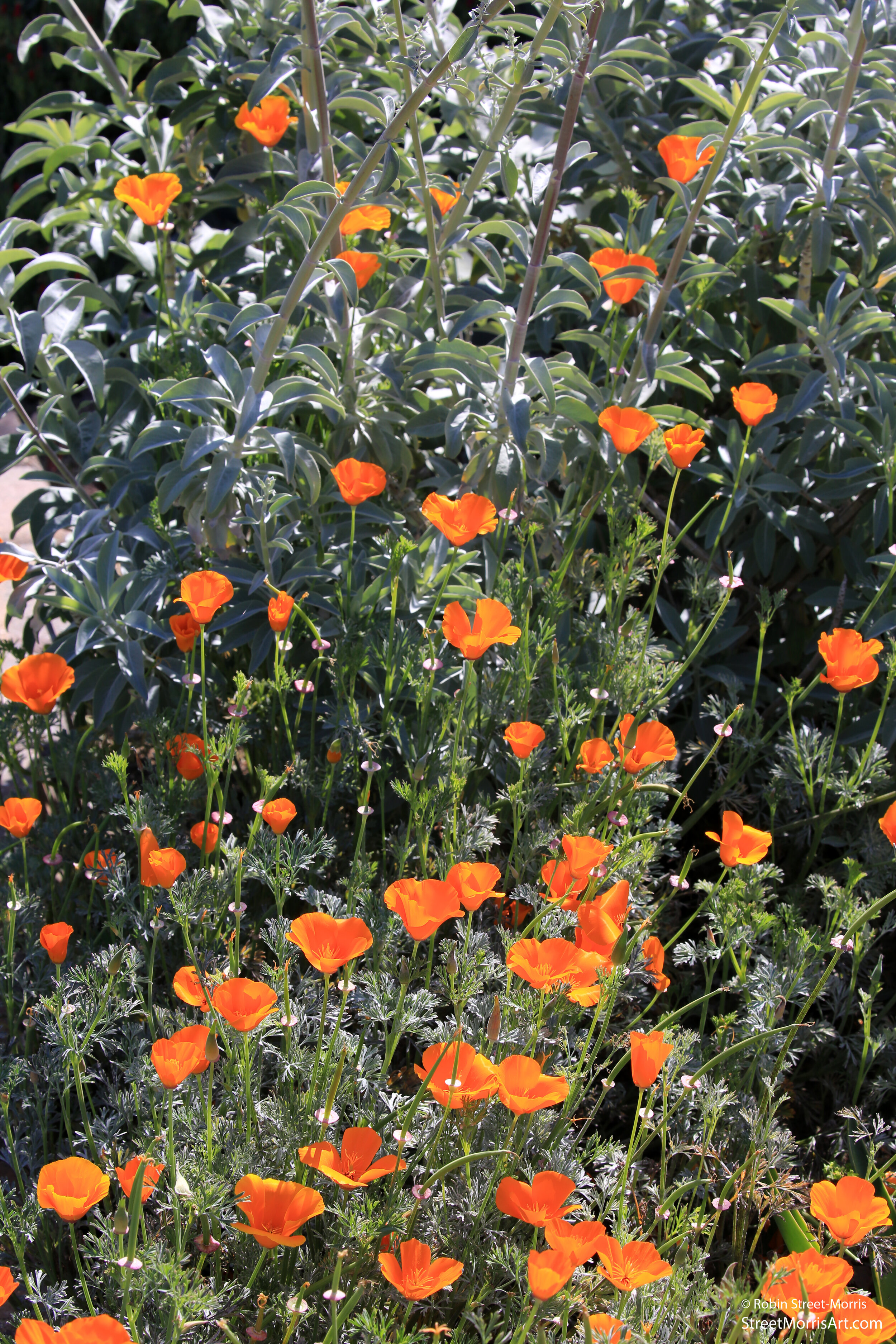We may be off to a cold start in San Diego, but it's spring as far as I'm concerned. Patience was required to catch this shot of an Anna's hummingbird (Calypte anna) working a grove of mission manzanitas (Xylococcus bicolor) today. Look at how tight that range map is for the mission manzanita, the only member of its genus (the fancy word for that is "monotypic").
San Diego habitat
California Native Plant Week
Homeowners nearby got California Native Plant Week started a little early by having a magnificent laurel sumac chopped down. I'd have been thrilled had it come with our house purchase instead of the acacias and ecosystem-altering saltcedar that's since been replaced with a bush rue. I'm hoping our immediate neighbors don't feel pressured to do the same with their lemonade berry; it's trimmed up into an open shape the fire department feels is acceptable for creating a defensible space and isn't going to be responsible for our homes burning down if disaster hits this canyon. Palm fronds grazing our homes’ roofs and embers landing in leaf-filled gutters are another story. Those things are easily addressed without leveling more habitat and making our views hideous, though the powers that be already accomplished the latter at least somewhat by festooning the canyon finger with colored tape last fall urging us to do the former.
I dried my eyes, blew my nose and headed down to Los Peñasquitos Canyon Preserve to escape the sounds of the chainsaws that were giving me chills and to remind myself of what made me want to live in this area in the first place.
Peñasquitos Creek riparian zone
Mountain lion snacks doing some pruning
It and other discarded masks left with me along with the usual wrappers and plastic bottles.
Parish's nightshade (Solanum parishii)
Coast prickly pear (Opuntia littoralis)
Sycamore and willow holding paws
I learned that our San Diego chapter of the California Native Plant Society is to have a new mascot based on Dudleya pulverulenta. I could have painted one at its plumpest, but liked the contrast of the curled leaves and lush center of this one. It shows how well adapted they are to surviving our dry season while remaining beautiful. The inspiration for this piece is growing near a narrow path that dips low next to a bridge that’s part of a multiuse trail in Los Peñasquitos Canyon Preserve. One day, I was standing in said spot photographing it and a guy on a mountain bike shouted down to me asking if I was going to move any time soon. He wanted to take the more challenging way down rather than riding across the bridge. I told him pleasantly that I wasn’t finished and that the path I was on is for pedestrians and equestrians. He retorted that he didn’t see any horses. I suggested he ride across the bridge which he proceeded to do while calling me a few choice words women tend to not appreciate. I’ve learned that trail usage signs do little to stop cyclists out there and that if I stand my ground on the pedestrian/equestrian trails they ride around me into the plants, so I’ve given up on that approach.
Wherever we rest our heads the vast majority of nights is our home. Unless we’re camping (or homeless), we leave the preserves and parks and return to our apartments, condos and houses at night. The plants and animals in them have nowhere else to go, thus it’s my opinion that we owe them the right of way when we’re in their home.
California poppies (Eschscholzia californica) and white sages (Salvia apiana) are putting on a show in our yard as are many other sages and wildflowers.
Embrace
Belding’s orange-throated whiptail (Aspidoscelis hyperythrus ssp. beldingi) is a striking lizard subspecies that calls southern California and Baja California, Mexico home. I was in the right place at the right time today (and with a telephoto lens on) to witness multiple stages of mating behavior between these two. I also saw one that's regenerating its tail. They like foraging in the leaf litter under the plants that's putting nutrients back into the soil as it breaks down. I do maintain things a bit in that respect with fire safety in mind, but having a picture perfect garden in the traditional sense is at odds with my goal of creating habitat for wildlife. Sightings like this one often make my day.
Coast cholla (Cylindropuntia prolifera)
This is my favorite cholla species. Yes, I have a favorite cholla species. The one I purchased from Moosa Creek a few years ago bloomed for the first time this spring. This photo is of one growing in situ near the waterfall in Los Peñasquitos Canyon Preserve.
You can learn more about this plant here.











